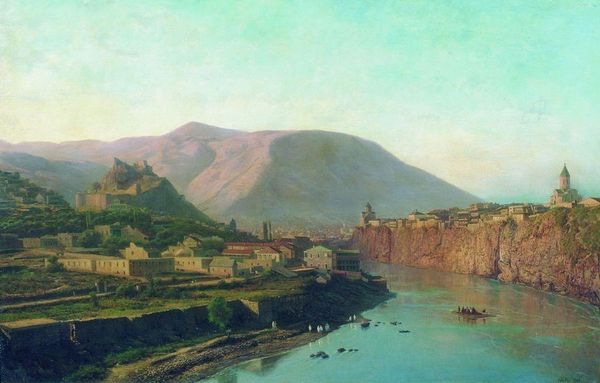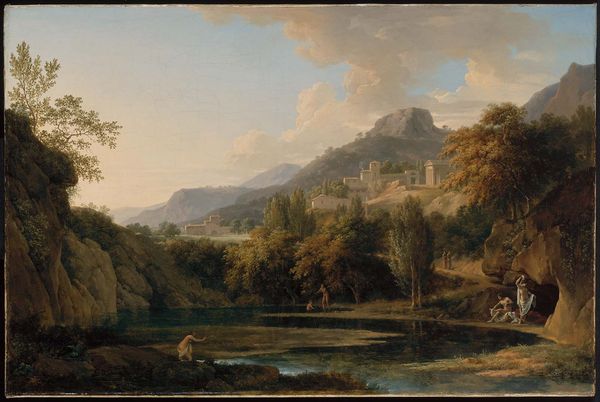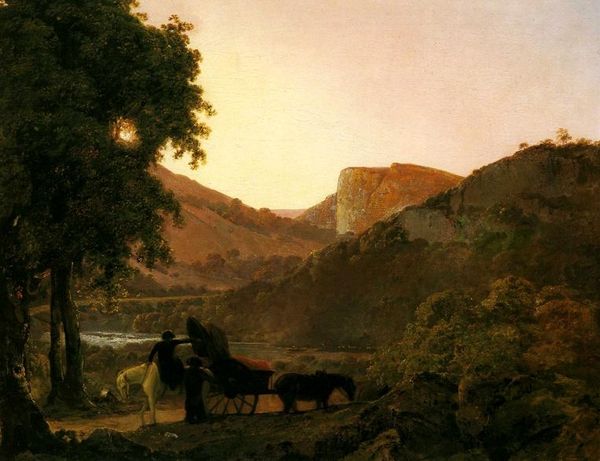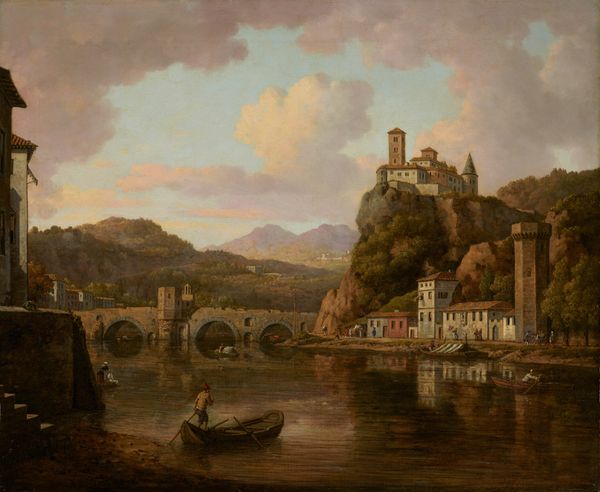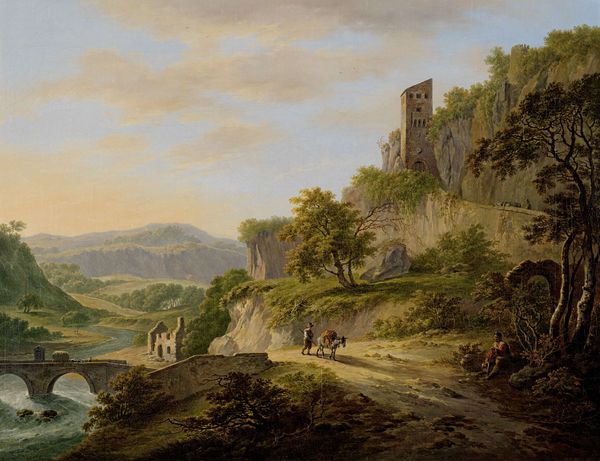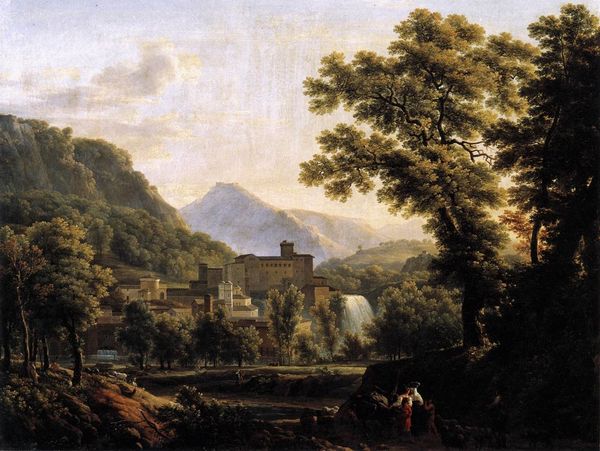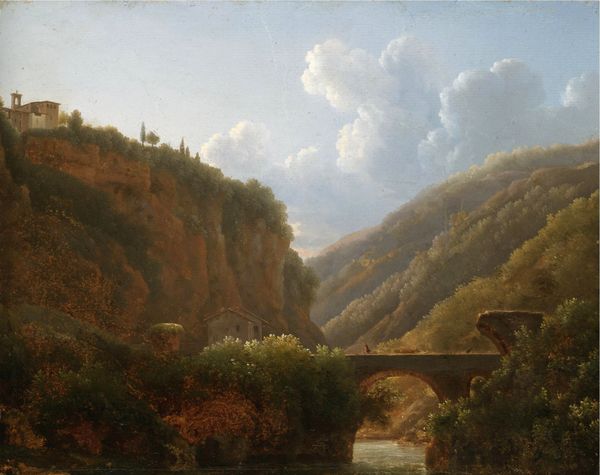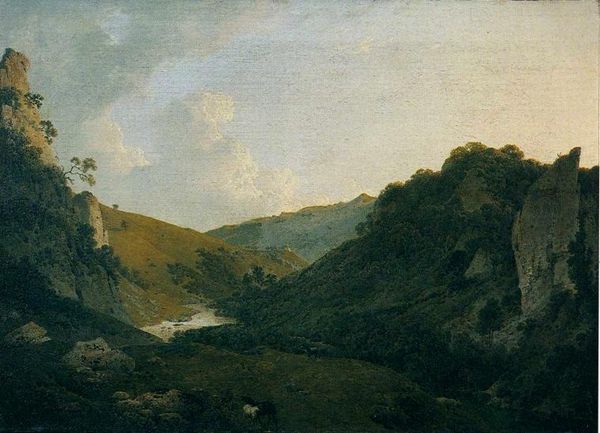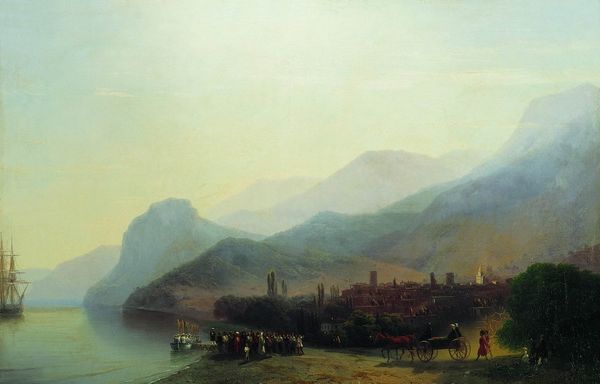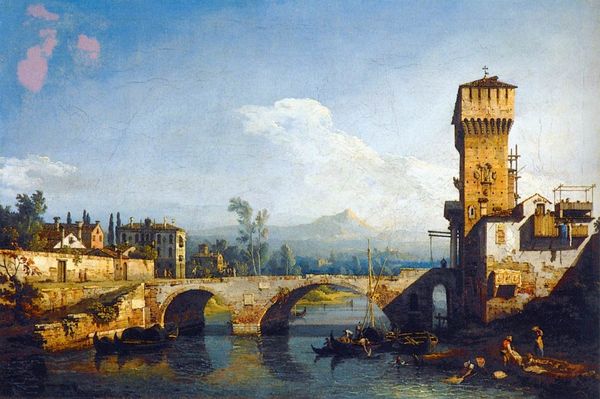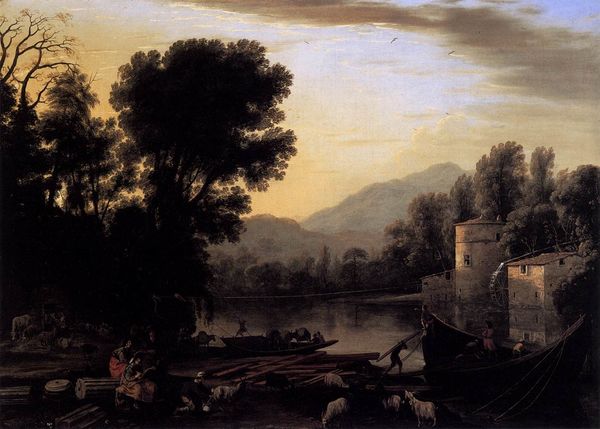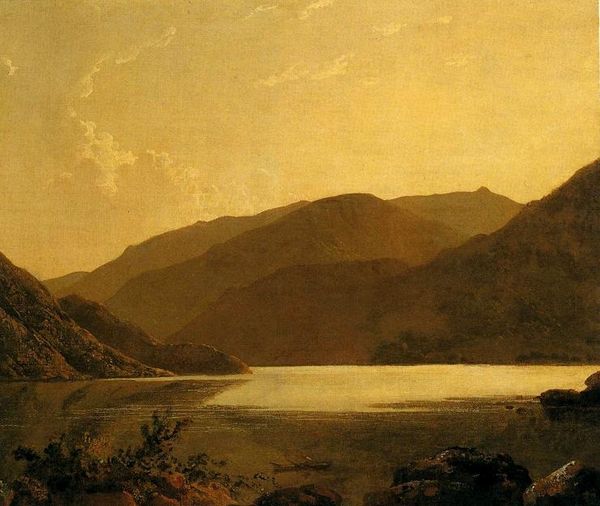
Convent of San-Cosimato and Part of the Claudian Aqueduct near Vicovaro in the Roman Campagna 1786
0:00
0:00
Copyright: Public domain
Editor: This is "Convent of San-Cosimato and Part of the Claudian Aqueduct near Vicovaro in the Roman Campagna" by Joseph Wright of Derby, painted in 1786 using oil paint. The scene has a romantic, almost melancholic feel. The composition is dominated by the towering cliffs, the aqueduct, and the suggestion of unseen spaces. What do you see in this piece, focusing on its structure? Curator: Primarily, I am struck by the deliberate use of recession and framing. Notice how the artist employs linear perspective, guiding the viewer's eye from the detailed foreground, across the bridge, towards the Claudian aqueduct and San Cosimato perched atop the heights, and into the hazy distance. The mountains in the background are crucial: a series of interlocking, vaguely defined geometric shapes in varied tonal values, pushing our gaze deeper and deeper. Editor: Yes, and the muted palette seems to emphasize this recession further. It's like the color itself is fading into the distance. The relationship of light and shadow seem very purposeful too. Curator: Precisely. Note how the raking light reveals the varied textures of the rock and foliage, in stark contrast to the shadowy depths within the valleys. The Claudian Aqueduct, bathed in a warm glow, serves as a focal point, drawing attention to human engineering amidst the grandeur of nature. Observe the careful construction of volumes through chiaroscuro; how each element contributes to a structured pictorial space. Can we find similar visual strategies at play in contemporaneous landscape painting of the period? Editor: Perhaps, but Wright of Derby does seem to strike a unique balance between observation and idealization. The brushwork itself feels very restrained and academic too. Curator: A fruitful observation, indeed! Now, having decoded some of the visual mechanisms here, we can look for meaning within the symbolic grammar of the image, or turn to address the philosophy that gave rise to it. But first, allow us to better recognize the internal mechanics that animates the scene, so that it doesn’t collapse under external readings and interpretations. Editor: That makes a lot of sense. I’m starting to appreciate the subtleties and the intentionality of the composition more now.
Comments
No comments
Be the first to comment and join the conversation on the ultimate creative platform.

